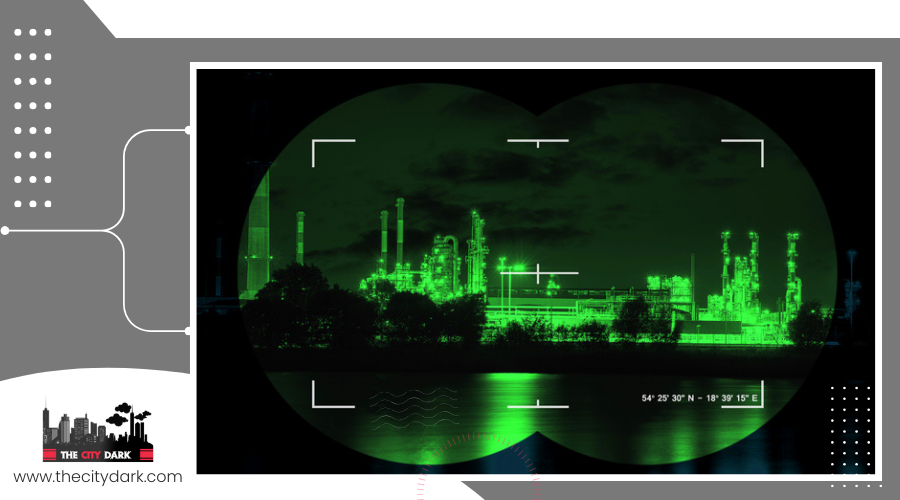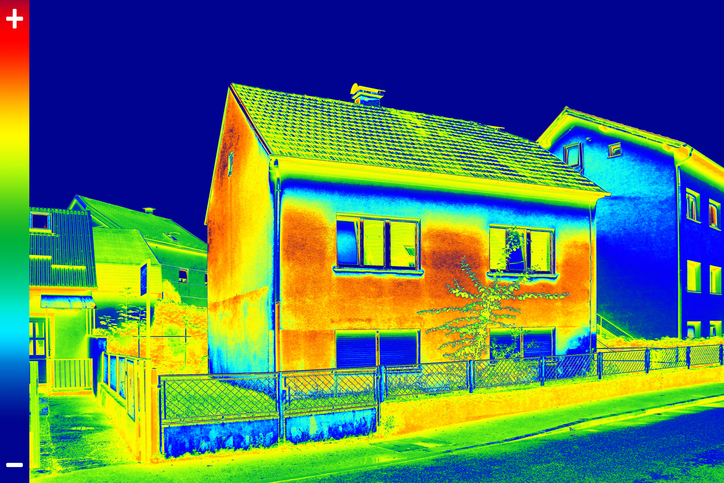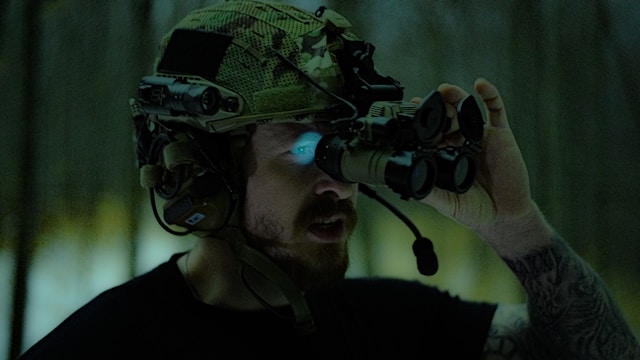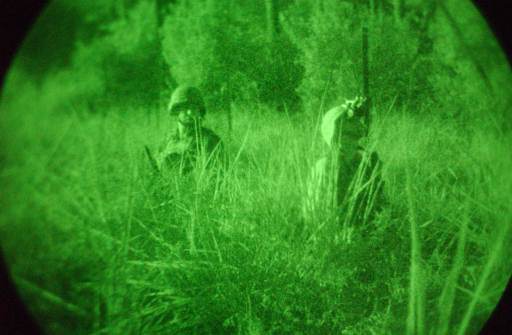Night vision technology transforms weak light into clear sight. It begins with dim light meeting a key part, the photocathode, which changes light into electrons. These electrons amplify, making a detailed image. Through enhancing images or spotting heat differences, it allows seeing in almost complete darkness. Useful in military operations and observing wildlife, it marks a significant advance. With each generation, these devices become sharper, more compact, and efficient. The exploration of how these tools improve and adapt vision under various conditions continues.
Key Takeaways
- Night vision technology makes minimal light much brighter, turning night into as clear as day.
- It uses a photocathode, turning photons of light into electrons to create images.
- A microchannel plate multiplies these electrons, making the image sharper and more detailed.
- This enhanced signal is then turned back into light, allowing us to see clearly in the dark.
- The latest technology uses white phosphor for clearer black and white images, easing the eyes and enhancing contrast.
Image Enhancement Explained
Image enhancement in night vision technology boosts even the smallest amount of light, changing night into almost day. This technology shines in the dark, capturing light we can’t see with our eyes to make everything clearer. It works by changing light into electrons – a smart trick. Light hits a part called the photocathode, which changes photons into electrons.
These electrons then go through a special plate, getting stronger and making the image clearer and full of detail. This step is crucial for making things easier to see. Night vision devices with this tech help you see in the dark like never before, giving you clear details. Whether you’re on a night adventure or doing important work in dim light, this technology ensures you see well.
Thermal Imaging Fundamentals
Using simple language and focusing on the essence, thermal imaging transforms the unseen heat from objects into a viewable picture. This method stands out because it captures what we can’t see with our eyes—the invisible heat every object gives off due to its temperature. Here’s the clear-cut advantage of thermal imaging:
- Catches Invisible Heat: It picks up on the heat (infrared radiation) that things around us are constantly emitting, invisible to our eyes.
- Sees Temperature Differences: Thermal imaging sees the changes in heat that objects give off, making it easy to tell them apart in any setting.
- Transforms Heat into Sight: Using advanced sensors, thermal cameras change this heat into a picture we can see, letting us spot and understand objects by their warmth, even in total darkness.
- Works Anywhere: It’s perfect for when it’s too dark for regular night vision. Thermal imaging can find heat in the dark, through smoke, or fog, proving its worth in many situations.
Generations of Night Vision
As you’ve discovered thermal imaging, let’s pivot to night vision’s evolution. We begin with first-generation basics, then move to second and third generation enhancements. Each phase not only enhanced image clarity but also broadened night vision’s scope.
First Generation Basics
Exploring the fundamentals of first-generation night vision requires highlighting its dependency on ambient light. Here’s a simplified overview consistent with Hemingway’s four rules for writing well:
- Use Short Sentences: First-gen devices needed moonlight or similar to work.
- Use Vigorous English: They made images clearer in darkness but lacked sharpness.
- Be Positive, Not Negative: Instead of offering a wide view, they limited what you could see around you.
- Have One Thing Well Done: At first, they were bulky and costly, but became more accessible over time.
Advanced Second Generation
With the advent of the second generation, night vision technology took a significant leap forward, thanks to the introduction of the microchannel plate. This innovation boosted the electron cascade process, leading to much clearer images. Second-generation devices, unlike their first-generation counterparts, showed less distortion and were more effective in low-light situations.
The microchannel plate technology was a significant advancement, enhancing light amplification and overall image quality. It’s fair to say that the second generation was a pivotal moment in the evolution of night vision technology, offering improved performance and setting a new benchmark for nighttime operations.
Third Generation Innovations
Building on previous technologies, third-generation night vision brought in gallium arsenide, making images not just brighter but clearer too. This advancement significantly changed night perception. Here’s how:
- Gallium Arsenide: Boosted light sensitivity, improving image clarity.
- Ion Barrier Film: Made these devices last longer.
- Image Quality: Became much clearer and brighter, showing more details at night.
- Enhanced Performance: Allowed for better navigation and identification when it’s dark.
These improvements set new benchmarks for night operations and surveillance, thanks to third-generation night vision technology.
White Phosphor Technology
Understanding the evolution of night vision brings us to White Phosphor Technology, a pivotal advancement made by ATN. This technology transforms night vision, offering images in crisp, natural black and white. It stands as a fundamental improvement, delivering clearer visibility and various technological benefits, significantly enhancing the night vision experience.
Enhancing Visibility
White Phosphor Technology transforms night vision by providing clear, natural black and white images, improving your visual experience in low-light. This advancement in night vision goggles greatly enhances how you see your surroundings in the dark. Here’s how it boosts your visibility:
- White Phosphor Tech delivers unmatched contrast and detail, simplifying object identification in the dark.
- It shows images in black and white, more recognizable to us, aiding in faster recognition.
- Autogate technology within these devices guards against sudden bright light, adjusting to light changes smoothly.
- The minimized eye strain allows for longer use without discomfort, keeping visibility and alertness high.
Technology Advantages
Harnessing White Phosphor Technology, ATN transforms night vision. This advanced technology offers clear, natural black and white images, improving your vision in low light. Unlike traditional green phosphor night vision, this delivers sharper contrast. ATN’s 3+Gen devices, featuring Autogate technology, ensure your night vision remains undamaged in bright light. This allows use in various lighting, even sunlight, without harming the device. ATN’s commitment to innovation enhances and secures your night vision experiences.
Autogated Functionality
In the realm of night vision tech, the autogated feature stands out by protecting devices from bright light damage and ensuring they adapt smoothly to changing light conditions. This element significantly improves the user experience and protects the device.
Here’s how autogated functionality benefits night vision devices, following Hemingway’s four rules for writing well:
- Autogated tech adjusts the image intensifier quickly to prevent damage from bright light. This means moving from dark to light areas won’t harm your device.
- Autogated allows for non-stop operation in different light without manual changes. This is key for activities needing constant visual without stopping to tweak settings.
- Autogated reduces blooming and distortion, ensuring high image quality in all lighting. This means clearer, dependable visuals.
- Autogated not only boosts functionality but also protects the night vision device, ensuring it stays working well over time, even in tough light conditions.
Green Vs. Digital Night Vision
Let’s compare green and digital night vision technologies, each with distinct advantages for various uses. Green technology offers a more natural viewing experience, improving contrast and depth perception. This helps in spotting subtle movements or shapes, crucial in many environments. But, be aware that bright lights can tire your eyes with green night vision.
Digital night vision, however, captures and shows images in clearer detail, in black and white or color. It remains unaffected by bright lights, ensuring consistent quality in changing conditions. This makes it better for areas where light levels vary. Plus, digital devices can store and share images and videos, adding a layer of convenience not found in green night vision. This digital feature changes how you record nighttime activities, providing both clarity and ease.
Optoelectronic Image Enhancement
Optoelectronic image enhancement transforms night vision quality by amplifying visible and infrared light. This tech lets you see clearly in the dark. But how? Here’s a simple explanation:
- Collect Light: Your device’s front lens gathers faint visible and infrared light. It’s the first step in making images clearer.
- Turn Light into Electrons: The light meets photocathodes and changes into electrons. This change is crucial because we work with electrons to enhance the image.
- Boost the Signal: Electrons pass through microchannel plates with many tiny channels, multiplying them and making the unseen seen.
- Enhance Image Quality: With this tech, the stronger electron signal turns back into a sharper, more detailed visual image than you’d see with your own eyes or standard methods at night.
This is why optoelectronic image enhancement is key for top-notch night vision.
Applications Across Fields
Night vision technology has transformed nighttime activities, making them clearer and safer. This technology, when understood and used properly, allows various professions to work more efficiently and effectively in the dark.
For example, military personnel use this technology for essential tasks like identifying targets and navigating in low-light conditions. This ensures their missions can continue, even without light. Law enforcement also uses night-vision goggles for watching over areas, following suspects, and improving awareness at night. This gives them an advantage in the darkness.
Hunters use night vision to find and track animals at night, increasing their chances of success. Wildlife watchers can observe nocturnal animals without disturbing them, thanks to this technology. Security workers monitor places and spot intruders with it, enhancing safety and security at night.
In short, night vision technology is crucial for activities like law enforcement, hunting, and security at night, making dangerous tasks in the dark safer and easier.
Choosing the Right Monocular
Selecting the perfect monocular for enhancing your night vision capabilities entails a few key considerations to maximize your nocturnal adventures. Whether it’s for night hikes or observing wildlife after dusk, the ideal night vision device can significantly improve your dark environment visibility. Here’s a straightforward guide to choosing wisely:
- Go for a monocular that matches your need for magnification. It makes distant objects seem closer and clearer. High magnification is key.
- Seek out monoculars with superior resolution. They offer crisp, detailed images, elevating your night vision.
- Pick a monocular that gives you a wide view. It lets you see more without moving it much.
- Consider extras like image stabilization for smoother viewing on the move. Check its size and weight too. You want it light and easy to handle.
Frequently Asked Questions
Can Night Vision Work in Total Darkness?
Yes, night vision operates in utter darkness. It employs infrared illumination, amplifying faint light. This technology unveils the unseen, turning pitch black into a visible scene through thermal imaging.
Conclusion
The journey through night vision technology reveals the unseen, from enhancing images to capturing warmth. Each step, from the progression across generations to the choice between green and digital visuals, showcases how these advancements support many fields. The key to selecting the perfect monocular lies in understanding your requirements. As technology evolves, keeping up-to-date ensures you have the finest tools for night exploration. Continue to explore and welcome the darkness with open arms.





